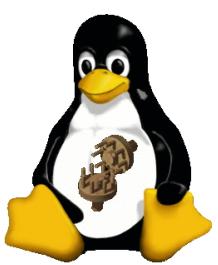

PAUD is a disk image that contains system utilities, such as fdisk, mc (midnight commander), parted, ntfsresize, and more. PAUD is ideal for rescue/administration purposes and transferring files from one filesystem to another for windows users.
Note: Due to the shrinking popularity of floppy drives, PAUD is no longer under development and 2.0.3 is the last version. Please consider other options such as a Live CD or a flash drive distribution which can do what PAUD does plus much more.
The latest version of PAUD (2.0.3) has glibc-2.2.5, kernel 2.4.20, support for up to 4 virtual consoles. Kernel has DMA support (enabled with hdparm). SCSI support is also available with an optional expansion floppy. FAT/VFAT, ext2, ext3, and reiserfs v3 are supported in the kernel. NTFS is also supported via command-line utilities.
Here is a list of all the commands, some of thses are internel commands of busybox:
busybox commands:
other commands:
expansion floppy commands:
expansion floppy kernel modules:
expansion floppy: The expansion floppy contains reiserfsck and SCSI kernel modules. Please note that the expansion floppy is optional (the first floppy will function alone).
NTFS: NTFS support is available via command-line utilities. 'ntfsls' is used to list files. 'ntfscat' is used to copy files (specify '>outfile' to copy to a file instead of stdout). 'ntfsresize' resizes the filesystem. Note: it resizes the filesystem only, you need to resize the partition manually using fdisk/cfdisk; don't use fdisk unless you are sure of what you are doing as you could make the data inaccessible.
ReiserFS: Run 'reiserfsck --fix-fixable' (either from PAUD or your main OS) after modifying any reiserfs filesystems from parted, to fix any potential problems.
Ext3: parted cannot create ext3 filesystems. If you would like to create one, first create an ext2 partition from parted, then create a journal to convert it to ext3 with 'tune2fs -j' (not included with PAUD).
hdparm/DMA: DMA isn't enabled by default, 'hdparm' allows you to enable DMA using the '-d1' option.
mc: 'mc' is a great way of transferring files between filesystems (for Windows/DOS users) or for editing files if you need to. It can also be useful if you ever need to use PAUD for rescue purposes.
mounting: If you get an error when mounting that a filesystem cannot be found on the device, a different filesystem may have been found. Type 'mount' to see if it was actually mounted or not.
You can download all PAUD related files from
http://sourceforge.net/project/showfiles.php?group_id=37305
Third party sources can be downloaded from sources.
If you are using Windows NT/2000/XP, use rawritent to write the file to disk. If you are in DOS/9x/ME, use rawrite (rename file to 8.3 format first). You can obtain these from the download page.
If you are on a POSIX system, you can write the file to the disk with dd. e.g.:
dd if=paud-2.0.3.img of=/dev/fd0
If you would like to build a distribution similar to PAUD, download and extract 'paudscripts-2.0.3.tar.gz', then read the README file.
First thing to check if you are having problems is if the file was
written to the floppy correctly. You can check the md5sum with:
head -c X /dev/fd0 | md5sum
replace X with the size of the file that you wrote and /dev/fd0 with your floppy device. Compare the value with the following:
af58e653d530ab1526a486adf53ddafa paud-2.0.3-expansion.img d2cc392478a02bf57a356922f0d95e64 paud-2.0.3.img
If it differs, check the md5sum of the file to confirm it is not
corrupt, then try a different floppy disk.
On windows you would not be able to do this and would just have to try
writing to different floppy disks.
If you still have problems, bugs, comments, or need to
contact me, you may do so through my email:
nehalmistry@gmx.net